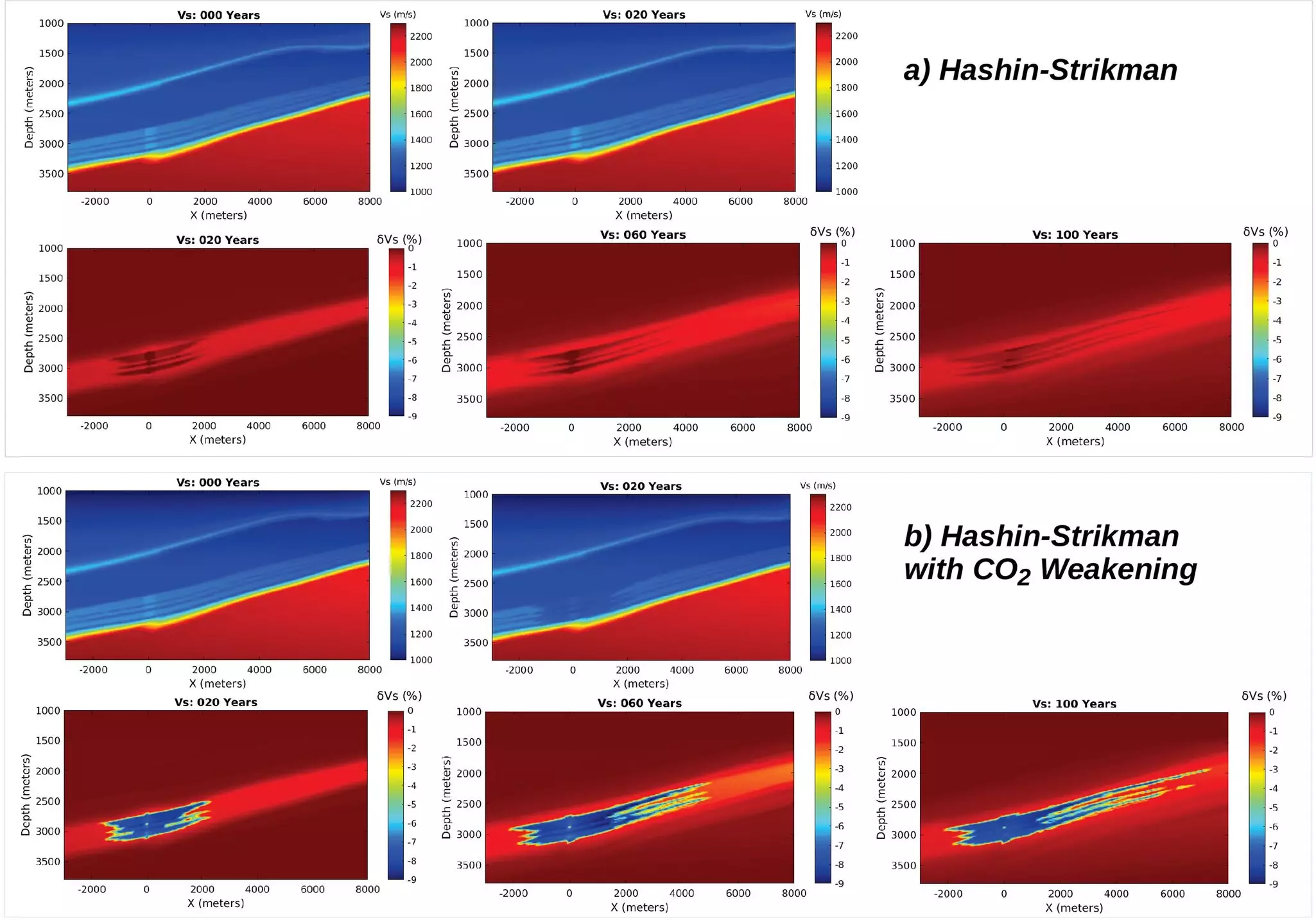As the world grapples with the devastating consequences of climate change, innovative solutions are paramount to diminish greenhouse gas emissions and stabilize our atmosphere. One potent method that has gained traction is geologic carbon storage, a procedure that involves capturing carbon dioxide (CO2) and injecting it deep underground into secure geological formations. This practice is designed to keep greenhouse gases from contributing to climate change by preventing CO2 from returning to the atmosphere. Yet, the success of geologic carbon storage predominantly hinges on the effectiveness of monitoring systems that guarantee the long-term integrity of these storage sites.
Recent research from Los Alamos National Laboratory introduces a significant advance in the field of rock physics modeling, which holds potential implications for making carbon storage safer and more effective. This new model is not merely a generic improvement; it addresses specific deficiencies in current seismic monitoring strategies, ultimately enhancing our ability to track and measure CO2 movement in subsurface environments.
Limitations of Current Monitoring Techniques
At present, the prevailing approach hinges upon the Biot-Gassmann equation, a longstanding model used extensively in the geosciences to predict how fluid saturation impacts the mechanical properties of rocks. However, complexities arise when it comes to the behavior of CO2 within these geological media. The Biot-Gassmann equation has been observed to fall short in several critical areas: it fails to account for nonlinear stress dependence and chemical interactions that can degrade the structural integrity of the host rock over time.
This shortcoming raises significant concerns as prolonged exposure to CO2 can lead to unexpected alterations in the rock’s elasticity, specifically impacting both shear and bulk moduli. As a consequence, relying solely on outdated models could lead to dangerous miscalculations. The stakes are particularly high; any undetected leaks from these storage reservoirs can pose severe environmental and safety risks, jeopardizing not just ecosystems but public health as well.
A Revolutionary Approach to Rock Physics
The new rock physics model conceptualized by the Los Alamos team offers a fresh perspective by focusing on the accurate representation of CO2-rock interactions. Dr. Lianjie Huang, a senior research scientist and co-author of the study published in the journal *Communications Earth & Environment*, emphasizes that their model provides more precise calculations for both compressional and shear-wave velocity changes in the presence of CO2. This advancement could pivotally enhance the reliability of seismic monitoring, enabling scientists to better predict CO2 migration patterns underground.
Furthermore, the new model indicates more pronounced alterations in elastic properties as compared to traditional models, particularly regarding shear-wave velocity. These findings align tightly with experimental data, suggesting that the research isn’t merely theoretical but has been validated through real-world testing. By bridging gaps in our understanding of subsurface rock behavior, this innovative approach equips geoscientists with improved tools to ensure that carbon capture and storage techniques can achieve their environmental goals effectively.
Implications for Future Carbon Management Strategies
As the globe collectively increases its focus on curtailing carbon emissions, the insights derived from this cutting-edge rock physics model could prove invaluable. Improved seismic monitoring could not only enable scientists to detect storage leaks more efficiently but also facilitate ongoing assessments of reservoir integrity. Thus, this research could act as a linchpin in future carbon management strategies aimed at preserving the ecosystem while allowing for continued industrial activity.
Moreover, optimal geologic carbon storage practices could bolster public trust in carbon capture technologies. Given the skepticism surrounding the effectiveness of various climate intervention technologies, convincing stakeholders of the reliability of geologic storage is essential for widespread adoption. If this model succeeds in delivering the promised advancements in monitoring, it could catalyze an increased investment in carbon capture technology and expand its usage across industries that have long been considered heavy emitters.
Through all these advancements, the integration of new research findings into existing frameworks will be critical for the vigilance required in the fight against climate change. Keeping CO2 securely trapped in geological formations not only is a technological challenge but also an ethical responsibility as we work toward forging a more sustainable future.

